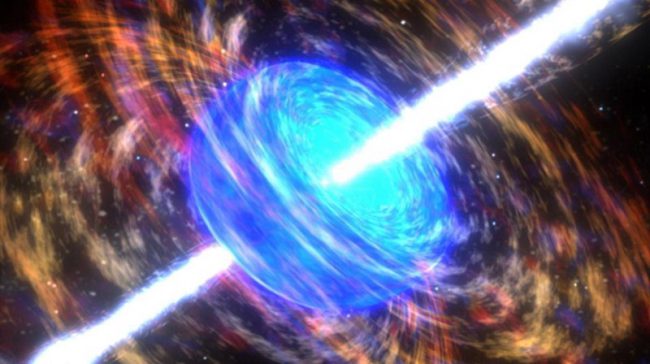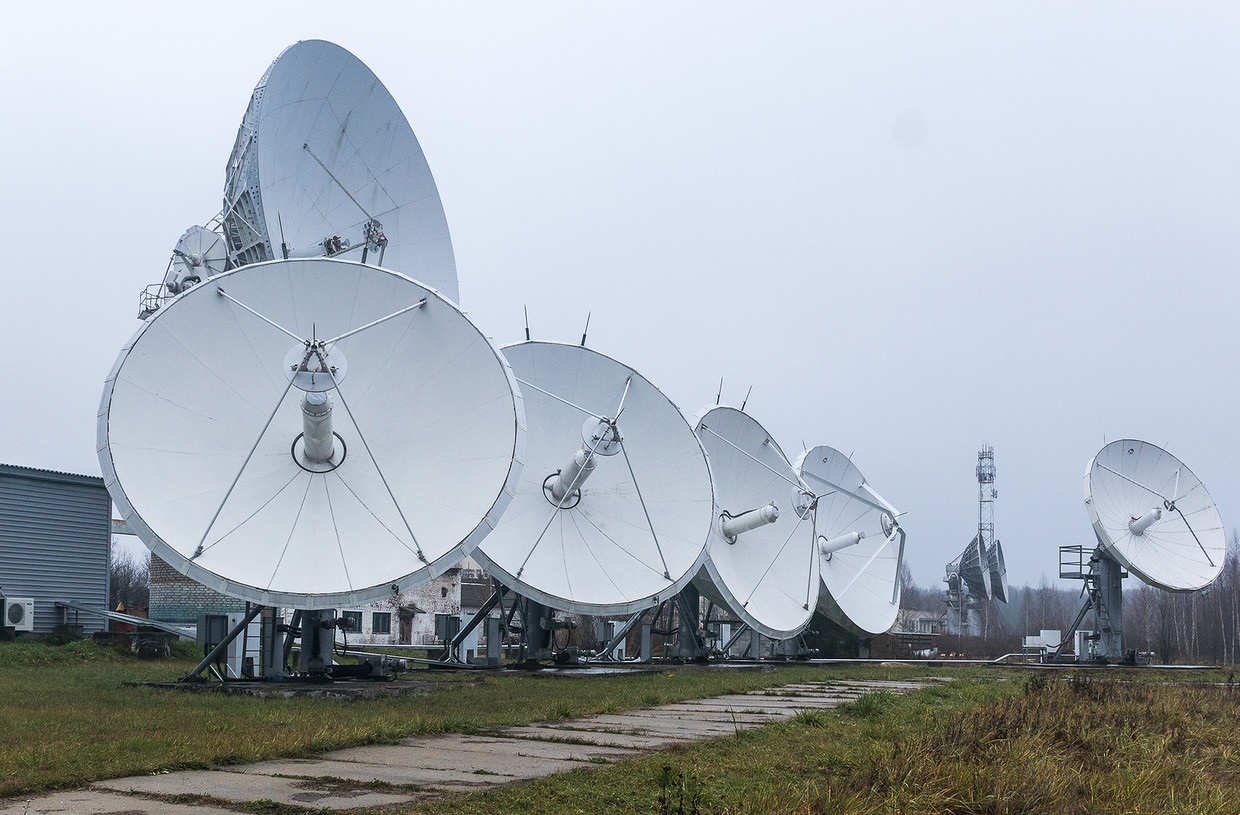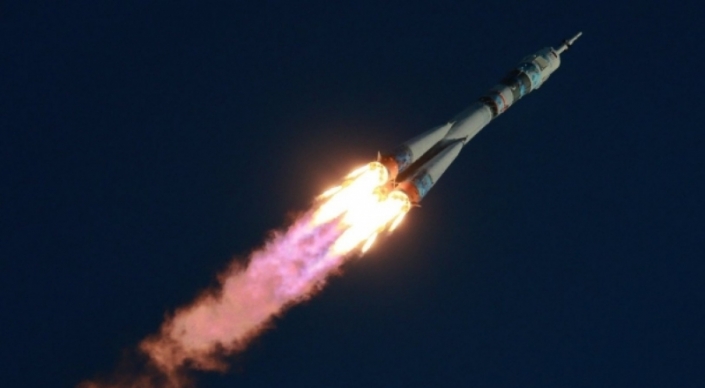Why are the stars different sizes? The answer is not as simple as it seems
 Source:
Source:
Massive means large, less massive means small, right? It's not so easy when it comes to stars and their sizes. If you compare the planet Earth with the Sun, it turns out that you can place 109 our planets one to another, just to pave the way from one end to the other lights. But there are stars smaller than Earth, and much, much more of the Earth's orbit around the Sun. How is that possible? What determines the size of the stars? Why "the sun" so different?
A tough Question, because we almost do not see the size of the star.
Deep telescopic image of stars in the night sky clearly shows stars of different sizes and brightnesses, but all the stars are shown as dots. The difference in size is an optical illusion associated with saturation of the Supervisory cameras
Even in the telescope, most stars look like mere points of light because of the huge distances to us. Their differences in color and brightness is easy to see, but the size — quite the contrary. An object of a certain size at a certain distance will have a so-called angular diameter the apparent size that the object occupies in the sky. The closest to the Sun star alpha Centauri is just 4.3 light years from us and 22% more than the Sun in radius.
Two solar-like stars, alpha Centauri A and B, located just 4.37 light years from us and rotating around each other at a distance between Saturn and Neptune. Even in this picture of the Hubble they are seen as just saturated point sources; no disk is not visible
However, it seems to us that its angular diameter is only 0.007’, or seconds of arc. From 60 seconds of arc is one minute of arc; 60 minutes of arc is 1 degree, and 360 degrees — a full circle. Even a telescope like Hubble can see only 0.05"; in the Universe are very few stars that telescope can actually "see" in a decent resolution. As a rule, near the giant star like Betelgeuse or R Doradus is the largest angular diameter of the star in the sky.
the radio image is very, very big star Betelgeuse. One of the few stars that we see as larger than a point source, from the Earth
Fortunately, there are indirect measurements that allow us to calculate the physical size of the star, and they are incredibly hope. If you have a spherical object, which becomes so hot that it emits radiation, the total radiation emitted by a star is determined by two parameters: the temperature of the object and its physical dimensions. The reason for this is that the only place that emits light in the Universe is the surface of the star, and the surface area of the sphere is always calculated as a single equation: 4πr2, where r is the radius of the sphere. If you can measure the distance to this star, its temperature and brightness, you know its radius, and hence the size, simply because those are the laws of physics.
Close the red giant UY Scuti processed by means of a telescope Observatory Rutherford. This bright star can be only a "point" for most telescopes, but in fact it is the largest star known to humanity
When we make observations, we see that some stars have only a few tens of kilometers in size, and the other 1500 times greater than the Sun. Among the supergiant stars the largest is considered to be UY Scuti with a diameter of 2.4 billion kilometers, bigger than the orbit of Jupiter around the Sun. Of course, these incredible examples of stars you can't judge the majority. The most common types of stars are main sequence stars like our Sun: a star that consists of hydrogen and is supplied with energy through fusion of hydrogen into helium in its core. And they come in all sizes depending on the mass of the star itself.
a Young region of star formation in our own milky Way. As the gas cloud condensed under the force of gravity, a protostar heat up and become denser in their cores finally starts synthesis
When you have formed a star, the gravitational compression leads to the transformation of potential energy (gravitational potential energy) to kinetic (heat/motion) of a particle in the nucleus of the star. If mass is sufficient, the temperature will become high enough to ignite nuclear fusion in the innermost regions, where hydrogen nuclei turn into helium in the process chain reaction. In a star with a low mass of only a tiny part of the center will reach the threshold of 4 000 000 degrees and begin synthesis, and it will slowly leak. On the other hand, the biggest stars can be hundreds of times more massive than the Sun and reach temperatures-tens of millions of degrees, fusing hydrogen into helium at a speed millions of times faster than our Sun.
the Modern system of spectral classification Morgan-Keenan with temperature range of each star, shown above, in Kelvins. The overwhelming majority of stars (75%) stars are M-class, of which only 1 800 massive enough to become supernovae
The Smallest stars have smallest external flow and pressure of radiation, and the most massive are the large. This is the external radiation and the energy of the keep the star from gravitational collapse, but you may be surprised that the range is relatively narrow. The low-mass stars, red dwarfs, like Proxima Centauri, and VB 10 is only 10% of the size of the Sun, slightly more than Jupiter. But the big blue giant R136a1 250 times the Sun's mass, but only 30 times more in diameter. If you synthesize hydrogen into helium, the star will not be much change in size.
But not every star for the synthesis of hydrogen into helium. The small stars nothing synthesized, and the biggest are much more vigorous stage of their lives. We can split the stars into types by size and select the five General classes:
The Neutron star: the remains of a supernova that contains a lot of one-three of the sun, but compressed into one giant atomic nucleus. They still emit radiation, but in small quantities due to their size. Ordinary neutron star the size varies between 20 and 100 kilometers.
White dwarf star: formed when a star like the sun burns the last of the helium fuel in the core, and the outer layers swell when the internal compressed. Typically, a white dwarf star is from 0.5 to 1.4 solar masses, but the physical volume close to Earth: about 10,000 kilometers in diameter, composed of highly compressed atoms.
Stars of the main sequence: there are red dwarfs, stars like the Sun and blue giants, which we have already mentioned. Their sizes are very different, from 100 000 km to 30 000 000 kilometers. But even the largest of these stars, if you put her in her place the Sun will swallow mercury.
Red giants: demonstrate what happens when the core hydrogen ends. If you are a red dwarf (in which case you will simply become a white dwarf), the gravitational compression heats your core so that you begin to synthesize helium into carbon. The synthesis of helium in carbon emits much more energy than the fusion of hydrogen into helium, so the star is expanding strongly. Physics is that the outgoing power (radiation) on the border of the star must balance the incoming power (gravity) to the star were stable, and the more power that seeks out the greater will be the star. Red giants usually make 100-150, 000, 000 kilometers in diameter. This is enough to absorb mercury, Venus and possibly the Earth.
Supergiant stars: the most massive stars, which end with the synthesis of helium and begin to synthesize even heavier elements in nuclei: carbon, oxygen, silicon and sulfur. These stars destined to become supernovae, or black holes, but before that they will swell to billions of kilometers or even more. Among them are the large stars like Betelgeuse, and we put a star instead of our Sun, it would swallow all our solid planets, the asteroid belt, and even Jupiter.
the Sun is still relatively small compared to the giants, but will grow to the size of Arcturus in its red giant phase
For the youngest of all stars, such as neutron stars and white dwarfs, the rule is that the captured energy can only escape through a tiny surface area, which keeps them bright for a long time. But for all other stars the size is determined by a simple balance: the power of outgoing radiation at the surface needs to be directed inward gravitational attraction. Large radiation force means that the star swells to large proportions, and the biggest stars swell to billions of kilometers.
the Land, if the calculations are correct, will not be swallowed by the Sun in the red giant phase. But on the planet itself will be very hot in
The aging of the Sun its nucleus heats up, it expands and gets hotter with time. One to two billion years it will become hot enough to boil the Earth's oceans, if we get the planet to a safer orbit. In a few hundred million years the Sun will become big and bright. But let's face the truth: no matter how large, neither was our Sun, it will never be more massive than neutron stars and the largest supergiants, even if it is larger in size.
...Recommended
The Americans on the moon: what everyone should know?
the Upcoming cosmonautics day is my favorite holiday. It marks the triumph of the human mind: in just four thousand years Homo Sapiens went from hunter-gatherers to space explorers. 12 April 1961 Soviet cosmonaut Yuri Gagarin became the first man in ...
Why are some galaxies spiral shaped?
you Know what surprised me the most? The fact that we perceive the surrounding world as it is. Animals, plants, the laws of physics and the cosmos are perceived by many people as something so mundane and boring that they invent fairies, ghosts, monst...
Astronomers were able to see the death of another star system
In the cosmic ocean drifts a lot of mysteries about the existence of which we are unaware. One of these was uncovered five years ago, when astronomers have discovered a lonely star at a distance of 570 light years from Earth, the brightness of which ...
Related News
Interstellar travel will be possible sooner than you think
once humanity had ambitions that have led to such incredible projects as the first manned flight into space or a mission to the moon. The next step will be colonization of planets, and then interstellar travel. Initiative Breakthr...
Hundreds, thousands: what's important in the "newly discovered" exoplanets?
it May seem that NASA is constantly said about the discovery of the "new" earth-like exoplanets, because from time to time news on this subject slip on the main page of our site. It is always interesting to know that somewhere the...
Stephen Hawking: I am convinced that mankind must leave Earth
the Old Hawking is still not appeased. Recall that in may this year, the famous physicist made a very on our recent and, in his opinion, a very sad future. He said that mankind has only 100 years to leave the Earth, 900 years less...
In the Solar system is the Sun — in the center — many planets, asteroids, Kuiper belt objects and the moons, they are moons. Although most of the planets have satellites, and some Kuiper belt objects and even asteroids too, have t...
Nanoracks wants to turn the exhaust of the rocket in outer housing
as NASA is working to send humans into deep space, the Agency looking for new types space of the housing in which the astronauts could live far away from Earth. Company Nanoracks offers an interesting idea: instead of building som...
ISS has launched the first flexible solar panel
typically, solar panels are made up of many photovoltaic modules. The us space Agency NASA last Sunday spent in earth orbit the first of its kind experiment: using the manipulator Canadarm-2 was deployed on an experimental flexibl...
For an ultra-modern telescope JWST has selected the first target for research
the launch of the space telescope «James Webb» (JWST), which will take the place of the old Hubble, is scheduled for October 2018. If all goes well, this new giant space telescope will continue the legacy of the famous "...
Stage Falcon 9 will put the robot
the Company continues to put SpaceX first stage rocket Falcon9, so in the fact of planting the waste stage is not surprising. But Elon Musk, the head of the company, is constantly striving to improve and make the process of takeof...
10 ways by which aliens are able to contact us
Humanity is still not met any life forms outside of our planet. If you ignore the tales of "Area 51" and "eyewitness encounters with UFOs and their pilots" we still have not received any extraterrestrial signals even remotely tryi...
LIGO suspected that black holes emit light
Billions of years ago two black holes much more massive than the Sun — 31 and 19 solar masses each — merged in a distant galaxy. 4 January 2017 these gravitational waves traveling across the Universe at the speed of light, finally...
Chinese quantum satellite transmitted data at a record distance
the fact that the first quantum test of the satellite were successful, Chinese scientists from the Chinese Academy of Sciences announced the other day, then published a detailed article on this topic in the journal Science. Scien...
We will look for life on distant exoplanets?
the Search for extraterrestrial life is undoubtedly one of the most profound scientific events of our time. If extraterrestrial biological life will be found near another world around another star, we'll finally know that life out...
The fire from the fallen blocks of the rocket "Soyuz" a man died
Drop blocks of the carrier rocket «Union» led to the fire in the steppe of Kazakhstan near the town of Zhezkazgan, which killed the truck driver — reported «Roskosmos» the morning of 15 June. Employee N...
How will the death of the milky Way?
we are on the Earth another billion or two years before the oceans boil and the planet will become uninhabitable. The sun will heat up, turn into a red giant, burn the fuel in the core, will inflate their outer layers and shrink i...
10 important NASA missions that we are looking forward to
National Aeronautics and space administration (NASA) was established on 1 October 1958. It was the direct descendant of the "space race" period of the 20th century, when the United States and the Soviet Union essentially were comp...
Boeing started to create an experimental space plane Phantom Express
according to the publication Seeker, a well-known company-the manufacturer of aircraft Boeing together with DARPA in the framework of the programme for space exploration, XS-1 begin to create a supersonic space plane called Phanto...
Seven of the most extreme planets that we found
Not so long ago scientists have discovered the hottest planet in the entire history of observations — with surface temperatures in excess of such even some stars. As the search for planets outside our own Solar system, we find man...
"The first space nation" wants to develop outside the legal field of the Earth
At the end of last year an international group of scientists announced the project Asgardia is the first independent space nation, free from the constraints of earthly law. Read more about this project you can read in our . I conf...
China began the development of spacecraft with a horizontal takeoff
that work on the creation of the space plane are already underway, the portal said one of the leaders of the Corporation Casic, which experts are engaged in the development. Vice President of the aerospace Corporation Liu Shiquan...
throughout the history of space exploration, the astronauts and cosmonauts appeared several times on the verge of death. We've all heard about the catastrophe Shuttle "Challenger" and "Columbia", know about the exploits of the Leo...









































Comments (0)
This article has no comment, be the first!